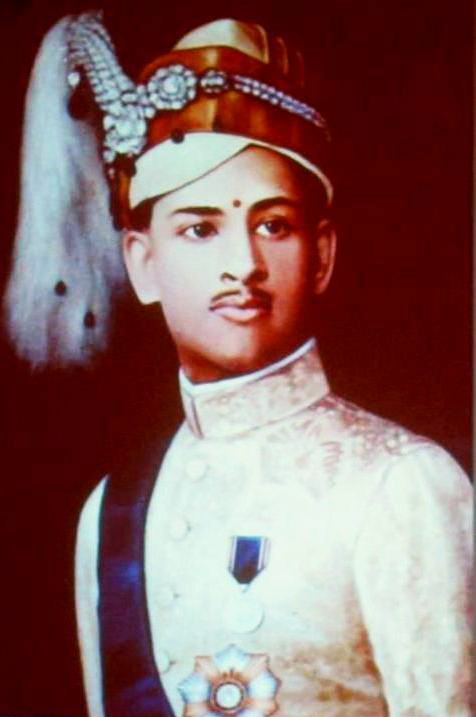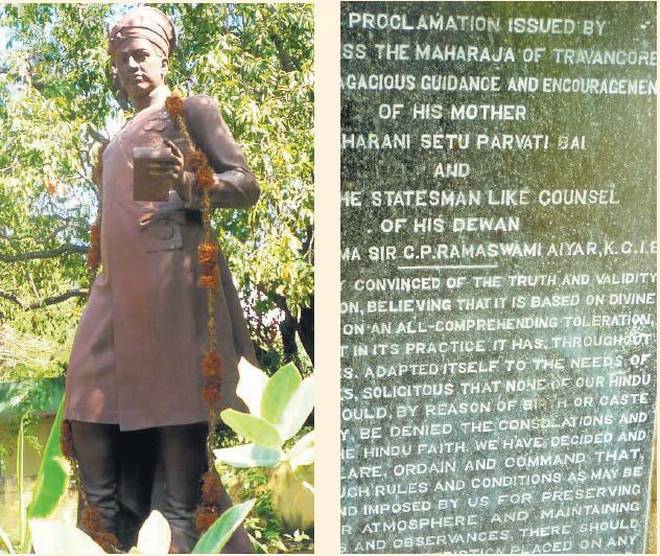The Tale of Travancore’s Last King and His Path-Breaking Temple Proclamation
In pre-Independence India, a young king from Kerala stunned the rest of the country by removing restrictions on Dalit entry to Hindu temples.

For centuries, the system of caste based-social stratification in India has created conflict over one’s right to worship their preferred deity. But times are changing and so are regressive social norms. The flag-bearer of this much-awaited metamorphosis is the state of Kerala, which recently appointed Dalits and other non-Brahmins as main priests in temples.
While this move is definitely a turning point, it isn’t the first time Kerala has set an inspiring example of Dalit emancipation. Few Indians know that at the height of India’s struggle for independence, the last Maharaja of Travancore, Sree Chithira Thirunal Balaram Varma, stunned the rest of the country by removing restrictions on Dalit entry to Hindu temples.
Here’s the story of one of the greatest social reformatory measures witnessed by pre-Independence India.

The year was 1924 and Mahatma Gandhi was visiting the erstwhile princely state of Travancore. During his meeting with the members of the royal family, he asked the then 12-year-old prince Balaram Varma whether he would throw open temples for lower caste Hindu people when he became the king. The resolute young prince firmly answered “I shall”.
Later, when he became the ruler of Travancore, Balaram Varma did not forget his promise. In 1932, he set up a Temple Entry Committee to examine the possibilities of opening the doors of shrines to all castes. His decision was also influenced by the Vaikom Satyagraha of 1924-25, a historic struggle for the right of avarnas (untouchables) to use public roads close to temples.
On November 12, 1936, Balaram Varma made a revolutionary royal proclamation that opened the doors of temples in Travancore for all Hindu devotees, irrespective of their caste and community.
In an immediately-sent telegram, Gandhi heartily congratulated the King and the formidable duo who guided him — his mother, Sethu Parvathi Bai (the junior queen) and his multi-faceted Dewan, Sir C.P. Ramaswami Aiyar — for the announcement. A paragraph from this telegram reads:
“The actuality has surpassed all expectations. The enthusiasm of the Harijans, the absence of all opposition to their entrance to the farthest limit possible to the highest caste, and the willing, nay the hearty co-operation of the officiating priests show the utter genuineness of the great and sweeping reform.”
Furthermore, Gandhi personally visited Travancore in January 1937 to participate in the event being held to celebrate the successful implementation of the path-breaking proclamation.

Interestingly, the announcement also had a deep impact on Madras Presidency, where a similar movement (for entry of Dalits into temples) was being pioneered by Periyar E V Ramasamy Naicker. Balaram Varma was feted and honoured by the people of Madras for his visionary decision, with the massive appreciation manifesting in the form of a statue.
Funded by public contribution and sculpted by M.S. Nagappa (the official sculptor to the British Crown), it was installed on October 28, 1939, at a corner of the Esplanade road. The park developed behind the statue — along with a pedestal bearing the full text of the 1936 proclamation — was also named the Travancore Maharajah’s Park.

As years passed, both the statue (the only one erected for a king in Chennai) and the watershed moment it represented were gradually forgotten. The park around the statue was replaced by an expanded Broadway bus terminus expansion while the statue itself became a holder for flags of the political parties conducting rallies in the vicinity.
All this while, Travancore’s witnessed multi-pronged progress under the aegis of Balaram Varma (who had become the first and only Rajpramukh of the Travancore-Cochin Union after Independence).
He was the one who established the Pallivasal Hydro-Electric Project, Thiruvananthapuram International Airport, Travancore Public Transport Department (later renamed Kerala State Road Transport Corporation), and Fertilizers and Chemicals Travancore (FACT).
Noted historians, like A Sreedhara Menon, also credit him for the industrialization of the erstwhile princely state.

Incidentally, Balaram Varma also sponsored the higher education of a young Dalit man who would go on to become the 10th President of India — Kocheril Raman Narayanan.
When the immensely popular King passed away in 1991, his neglected statue on Esplanade road was moved by his admirers (including veteran vocalist Semmangudi Srinivasa Iyer) to a better spot. Today, it rests in a corner of the Sree Anantha Padmanabha Swami temple in Adyar’s Gandhi Nagar locality (in present-day Chennai).
As India continues to moves towards a national consciousness that affirms and embraces equality, it’s time the saga of Travancore’s last King and his epoch-making proclamation find its rightful place amidst newer stories of reconciliation and redemption.
Also Read: Did You Know Sir M Visvesvaraya Tamed Hyderabad’s Floods for Decades?
Like this story? Or have something to share? Write to us: [email protected], or connect with us on Facebook and Twitter.
NEW: Click here to get positive news on WhatsApp!
This story made me
- 97
- 121
- 89
- 167
Tell Us More
We bring stories straight from the heart of India, to inspire millions and create a wave of impact. Our positive movement is growing bigger everyday, and we would love for you to join it.
Please contribute whatever you can, every little penny helps our team in bringing you more stories that support dreams and spread hope.



















